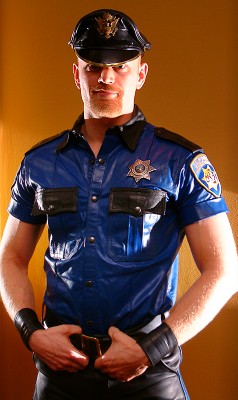
It can be confusing trying to work out why there is such a wide variety of prices for leather products. Items can range from tens to thousands of pounds. How do you know when you are getting a bargain or being ripped off? While the following notes won't make you an expert, they may explain why some products cost more than others ...

|
HIDES CAN COME FROM ALL OVER THE WORLD - The price of hides
varies greatly from one country to another. If your leather manufacturer cares how the animals were treated or which chemicals were used in the tanning process, they are likely to choose hides that come with some welfare/ quality guarantees, which pushes up the price.
HIDES STRETCH BY DIFFERENT AMOUNTS - The neck end of the hide stretches more than the rear - so a good manufacturer will make sure that they lay the pattern symmetrically over the hide. Trouser legs and the backs of shirts could be cut from the back end of the hide - where they will stretch less, and cuffs and collars cut from the neck end. However, this also increases wastage so puts up the price.
TANNING PROCESSES - The average thickness of a tanned cowhide is 5mm. This is too thick for most uses, so the hide is divided into a "grained" hide and one or two "splits". The splits are put through rollers to emboss a fake grain on them, but are lower quality and so usually used for furniture and car upholstery. If the "grained" hide has excessive scarring or marks it might be buffed smooth and embossed with a fake grain. This will allow the whole hide to be used for clothing, but should also lower the price. Look closely at the leather you are about to buy. If you can see tiny hair holes the leather has probably been aniline tanned and is a "grained" hide. This is the highest quality leather you can buy. If you can't see any hair holes the hide might be a "split", or been buffed smooth or had a pigment coating. These kinds of leather are often shinier and less able to absorb oil-based leather care products. Click here for some illustrations that show the differences between hides.
CHECK THE FINISHING TOUCHES - There are steps a leather artisan would take to finish a product that are easily skipped to save money. For example, when thick leather is cut for a belt or sling a craftsman might bevel the edges of the leather and then polish the cut edge with a piece of bone to prolong the life of the product. Sometimes you will see edges that look as if they've been cut with no further work done.
With thanks to MASTER U/ LeatherBound
 |
 |